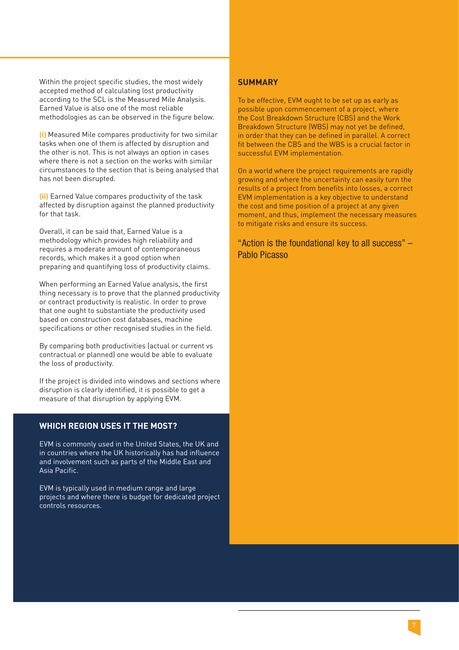Driver Trett Digest Issue 26 - Flipbook - Page 8

INTRODUCTION TO
DISRUPTION CLAIMS
WHAT IS DISRUPTION ON A CONSTRUCTION
PROJECT?
Disruption is defined by the second edition of the
Society of Construction Law, Delay and Disruption
Protocol (the “SCL Protocol”) as:
“disturbance, hindrance or interruption to a
Contractor’s normal working methods, resulting in
lower productivity or efficiency."1
For quantum, the crucial point of a disruption claim
are the additional costs incurred, over and above the
planned resources, due to a loss of productivity caused
by unanticipated interruptions to the planned work
progress. The consequence is a reduced rate of work
which leads to an increase in direct hours spent on the
relevant disrupted work. Examples of disruption include
site access problems, changes in the work sequence,
design changes, crowding of trades, fragmented work
gangs, overtime, rework, labour availability and poor
morale.
1. SCL Delay and Disruption Protocol 2nd Edition: February
2017.
8
Natasha Fortune
Senior Consultant
Paris, Driver Trett France
DISRUPTION VS DELAY
As Hudson’s Building and Engineering Construction
Contracts states:
“The distinction between delay and disruption is
important, but rarely articulated, and is to an extent a
matter of de昀椀nition. Delay is usually used to mean a
delay to the completion date, which presupposes that
the activity which was delayed was on the critical path.
Disruption to progress may or may not cause a delay to
overall completion, depending on whether the activity
delayed is on the critical path as explained above, but will
result in additional cost where labour or plant is underutilised as a consequence of the event.”2
Although the two common claims frequently overlap,
only critical events are relevant for prolongation costs
and may lead to compensation. Disruption claims are
compensation for less than expected productivity of
labour and/or equipment.
2. See Hudson's Building and Engineering Contracts, 13th
edition, Chapter 6 - Section 6.15.













